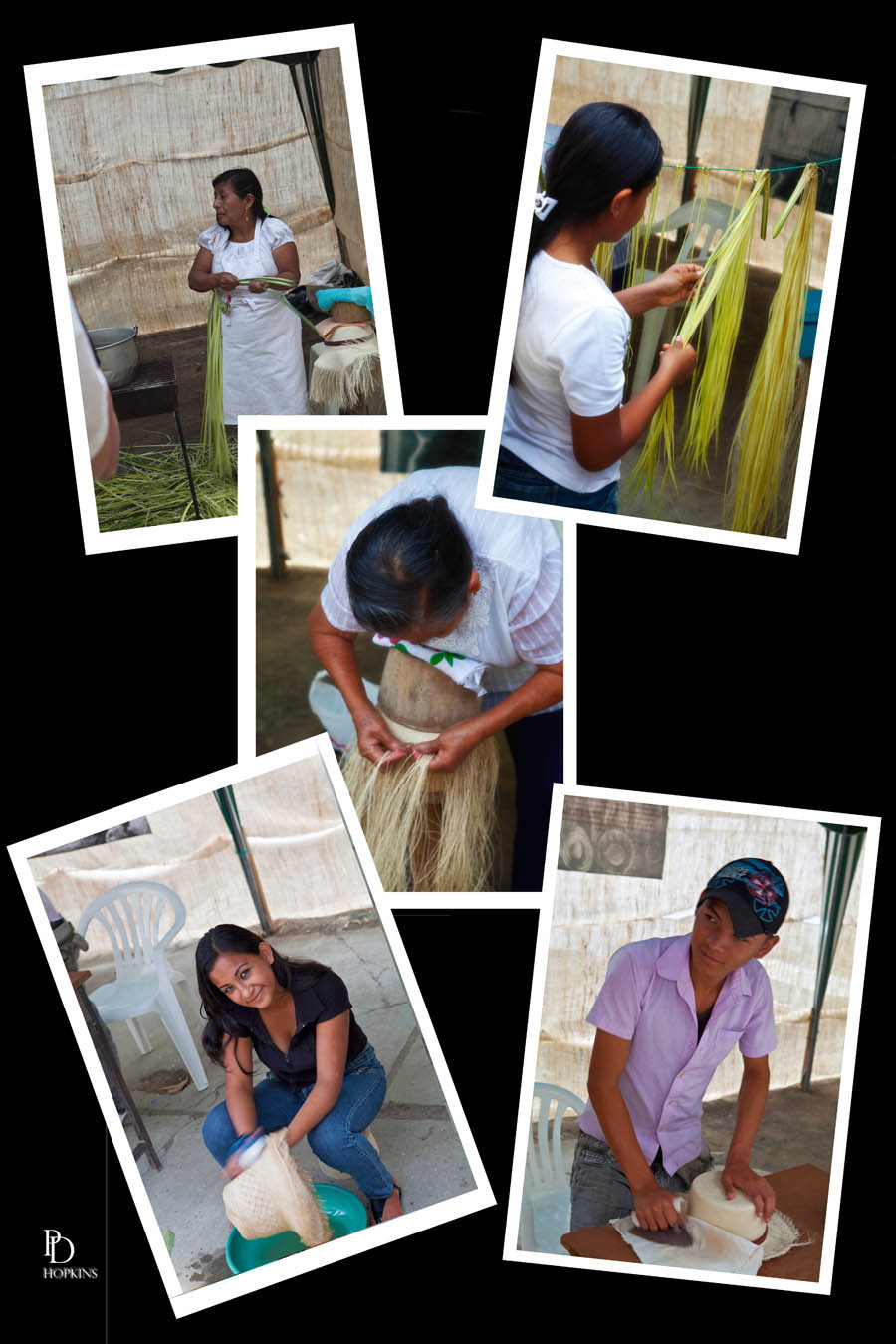This post is my segue from the Panama Canal to our first stop on the West Coast of South America, the port of Manta, Ecuador. Manta is very close to the town of Montecristi, home of the Panama Hat. Yes indeed, the Panama Hat is a product of Ecuador and got its name at the time of the Panama Canal’s construction. These hats were brought in from Ecuador for use by construction workers to shade them from the sun. The name stuck and to this day, the Ecuadoreans do not get due credit for these iconic hats.
Our stop in Manta included a trip to Montecristi where we observed the manufacturing process. It’s done by hand and in this case it is an old family business. Hats are made from the plaited leaves of the toquilla straw plant. You can see steps in the process in the following series of photographs.

Panama hat quality is a heavily disputed subject. There are two main processes in the hat’s creation: weaving and blocking. The best way to gauge the quality of the weave is to count the number of weaves per square inch. Fewer than 100 would be considered low quality. There are many degrees of increasing quality, up to the rarest and most expensive hats, which can have as many as 1600–2500 weaves per square inch; it is not unheard of for these hats to sell for thousands of dollars apiece. Such a hat is known as the Montecristi, named after the Ecuadorian city that produces the best Panamas. The second best type is the Cuenca, again, named for an Ecuadorian city.
The quality of the weave itself, however, is more important. A high weave count, even an attractive-looking one, does not guarantee a well-woven hat. It is said that a Panama of true quality (a “superfino”) can hold water and when folded for storage can pass through a wedding ring. However, Ecuadorian milliners disagree on how to rate the lesser-quality hats.

Where is a photo of Rolande (or Peter) in a Panama? ~(:>)>